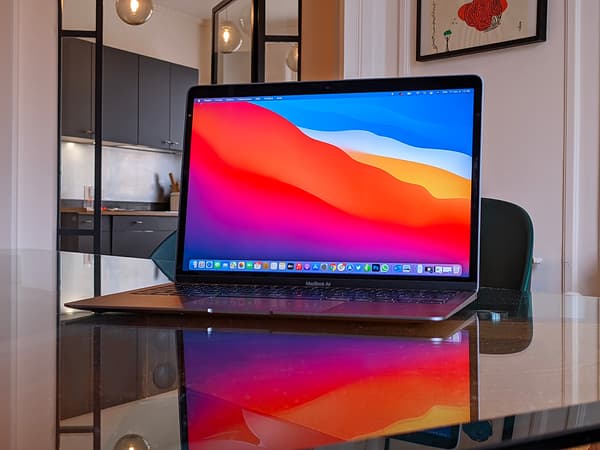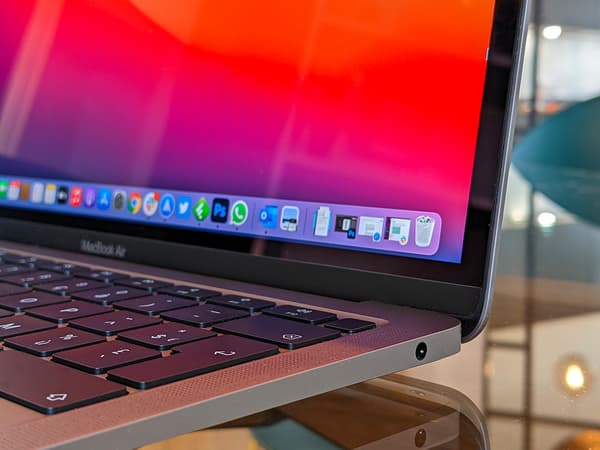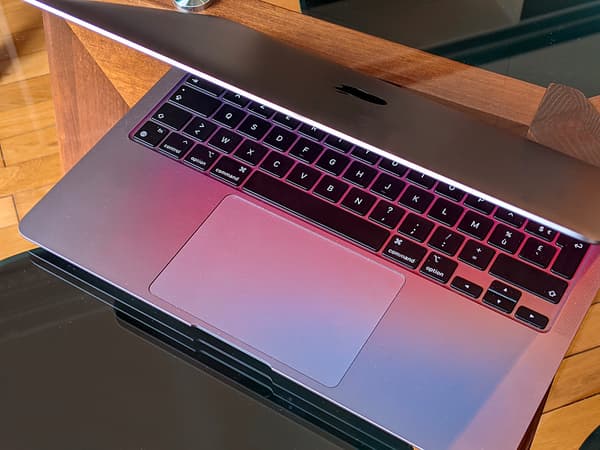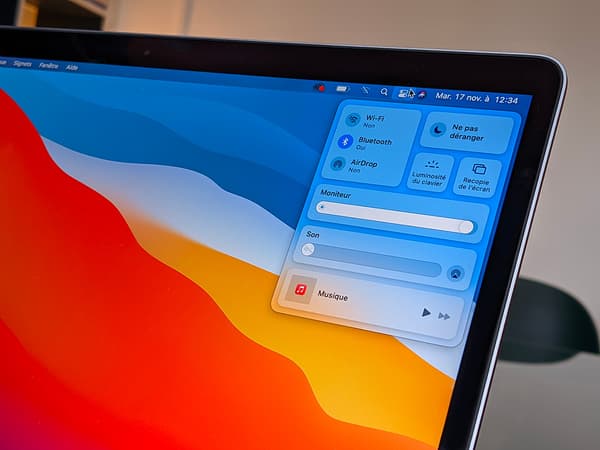the laptop that opens a new era
For the first time, one of the best-selling laptops on the market incorporates a processor derived from chips for smartphones. And this one makes sparks.
Apple is taking another historic step forward with its new MacBook Air and MacBook Pro (both 13 inches): they are indeed the first laptops to integrate the M1 chip, the “home” processor, developed by Apple.
Based on the A14 chip of the iPhone, it promises a tenfold power compared to the Intel chips used for fifteen years, as well as a sharp increase in autonomy. All in total silence, at least for the MacBook Air. Thanks to the energy efficiency of the M1 processor, the latter is fanless. The product is marketed at 1129 euros, against 1199 euros for the previous model.

The strengths of the MacBook Air
Thanks to the M1 chip, Apple’s role becomes even more unique in the computer market. It is now the only company directly responsible for the operating system of its machines, their hardware design and their processor. The latter stands out as a bonus from other processors, especially those from Intel, because of its technical architecture from the world of smartphones.
This MacBook Air therefore offers a completely new world, with classic computer use enabled by a mobile chip. At least, an almost new world, insofar as a few PC manufacturers – including Microsoft – have also tried to introduce processors for mobile (those from Qualcomm, which equip many Android smartphones). Attempts which each time ended in failure, materialized by poor performance or poor autonomy.

After a few days of using this MacBook Air, it seems obvious that Apple is on a much better footing for success. The gain in power compared to the model equipped with an Intel processor, released at the beginning of the year, is undeniable. Once in standby, the computer turns back on instantly, just like an iPhone. The various software already compatible with this new processor are of a much higher reactivity.
According to performance tests, this M1 chip, presented as Apple’s “entry-level” processor, is already doing better than the more expensive processors from Intel or AMD. It’s hard to see how laptop vendors – other than gaming computers – could compete.
Unlike previous versions of the MacBook Air, this new iteration is fanless … without heating up in the least. Here again, the feat is directly enabled by the use of the M1 processor, usually required to operate an iPhone. A much smaller product, which obviously has never been able to house a fan.
This MacBook Air is all the more silent as it inherits the Magic Keyboard, which is less noisy than previous generations.
This better energy management allows the MacBook Air to gain autonomy. And this significantly. While the previous version could accompany a classic working day – essentially based on email exchanges and web browsing – lasting about 8 hours, this new version never let us go for ten hours or so, going up to to 12 hours of use in a day. A very fine feat.

The revolution of this MacBook Air is internal. On the outside, it remains identical to the previous generation, whose quality of finish is well established. We find, as mentioned above, the Magic Keyboard as well as the very large (and comfortable) touchpad. The Retina display is still as well made, displaying perfectly accurate colors.
The weaknesses of the MacBook Air
If this MacBook Air is a pioneer, it also has its flaws. Or at least, the constraints. To date, there is little software that is compatible with its M1 chip. The list, which already contains the Microsoft Office suite, will soon grow, especially with the arrival of Google and Adobe software.
Faced with the weight that Apple weighs in the industry, developers should quickly make their applications available on the Mac App Store. But depending on the uses, you will sometimes have to wait to take advantage of all the power of the computer.

In order not to penalize anyone, Apple has developed an emulation system – internal and invisible to the user – capable of “translating” software designed for Intel processors. A translation that is done in real time, and which penalizes performance. With this system, they are close to those of the previous MacBook Air under Intel. A reasonable sacrifice.
By updating its most popular laptop PC, Apple took the opportunity to integrate Wi-Fi 6, the most advanced standard to date. But the reasons pushing the brand to keep an HD webcam (720p), which we would have liked to see replaced by a Full HD webcam (1080p), remain rather enigmatic.
Conclusion
After a MacBook Air already convincing at the beginning of the year, Apple is changing its size machine. The integration of its very first “homemade” processor is a success, with performance worthy of much more expensive products, associated with excellent battery life.
These performances will be all the more visible as the number of compatible software will be important. Those which are not yet ensure an operation at least equivalent to the previous generation, thanks to the emulation system created by the firm.
With a falling price, this new MacBook Air now seems to tick all the boxes, and could do a lot of harm to competing laptop manufacturers.





